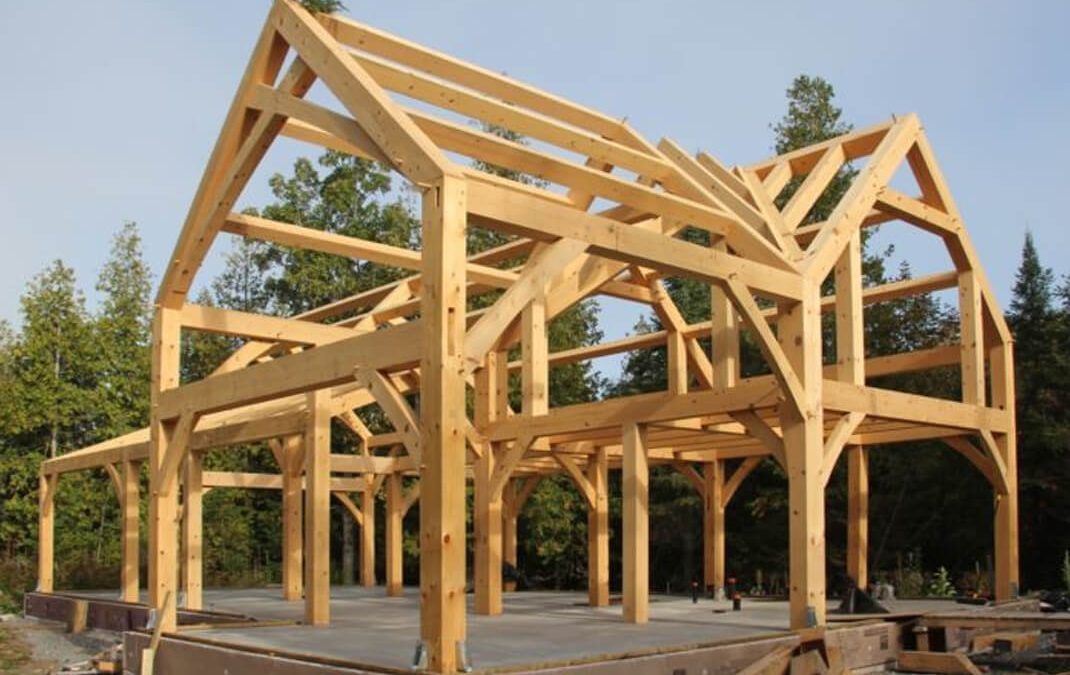Timber frame construction has long been a favored method of building in Australia due to its versatility, sustainability, and aesthetic appeal. Whether for residential or commercial projects, timber frames offer numerous advantages and can be tailored to suit various architectural styles. This comprehensive guide will delve into the advantages, considerations, and best practices for timber frame construction in Australia.
Advantages of Timber Frame Construction:
Timber frames offer several benefits that make them a popular choice in Australia:
Sustainability: Timber is a renewable resource, making it an environmentally friendly construction option.
Design Flexibility: Timber frames allow for versatile architectural designs and can accommodate various building shapes and sizes.
Thermal Performance: Timber’s natural insulating properties contribute to energy efficiency and a comfortable indoor environment.
Cost-effectiveness: Timber frame construction is often more affordable than other building methods, making it suitable for a range of budgets.
Australian Building Standards and Regulations:
Ensure compliance with relevant building standards and regulations when undertaking timber frame construction in Australia. Familiarize yourself with local codes, fire ratings, termite management requirements, and structural engineering guidelines to guarantee a safe and durable structure.
Timber Selection and Treatment:
Choose timber species that are suitable for Australian conditions and meet the requirements of your project. Commonly used timbers include treated pine, hardwoods (such as spotted gum or blackbutt), and engineered wood products. Ensure the timber is appropriately treated for protection against termites, decay, and other environmental factors.
Structural Design and Engineering:
Engage a qualified structural engineer or designer to develop the timber frame system based on the specific requirements of your project. This includes determining the appropriate timber sizes, connections, and bracing methods to ensure structural integrity and stability.
Construction Techniques and Practices:
Follow best practices for timber frame construction to achieve optimal results:
Site Preparation: Prepare the building site by clearing vegetation, leveling the ground, and addressing drainage considerations.
Framing Assembly: Precisely cut and assemble the timber frame components, ensuring accurate measurements and secure connections.
Insulation and Cladding: Incorporate appropriate insulation materials and install cladding to enhance energy efficiency and protect the timber frame.
Moisture Management: Implement proper moisture management techniques, including vapor barriers, flashings, and adequate ventilation, to prevent moisture-related issues.
Fire Safety: Comply with fire-resistant requirements and consider fire-rated materials and systems for enhanced safety.
Quality Assurance and Inspections:
Conduct regular quality checks throughout the construction process to ensure compliance with design specifications and industry standards. Schedule inspections by qualified professionals at critical stages to verify the structural integrity and safety of the timber frame.
Maintenance and Durability:
Timber frames require regular maintenance to maximize their durability and longevity. This includes routine inspections for pests, periodic resealing or repainting, and addressing any signs of decay or damage promptly.
Conclusion:
Timber frame construction offers numerous advantages for building projects in Australia, including sustainability, design flexibility, thermal performance, and cost-effectiveness. By adhering to local building standards, carefully selecting and treating timber, engaging qualified professionals, following best construction practices, and conducting regular maintenance, you can ensure a durable and aesthetically pleasing timber frame structure. Embrace the beauty and benefits of timber frame construction as you embark on your Australian building project.

